A chill is in the air. Mist in the valley. The wood tawny and bronzing. This is one of the most beautiful moments in the garden, standing still and voluminous, but beginning the decline. A decline suggests something lost, but the turn from the growing season is anything but. Colour in the grasses, the tail ends of the Verbena ‘Lavender Spires’ smattering violet.
Running in an undercurrent much like the cool air that sits in the hollows, the asters claim this moment. Softly spoken as flowers but enduring, they have been mustering quietly. The feeling of potential they provide is valuable as the summer plants fade around them in August, a month that often feels suspended between two seasons. Energy yet to be spent is good then and this is when the first of the asters begin their relay, one handing over to the next until frost finally does for them in November.
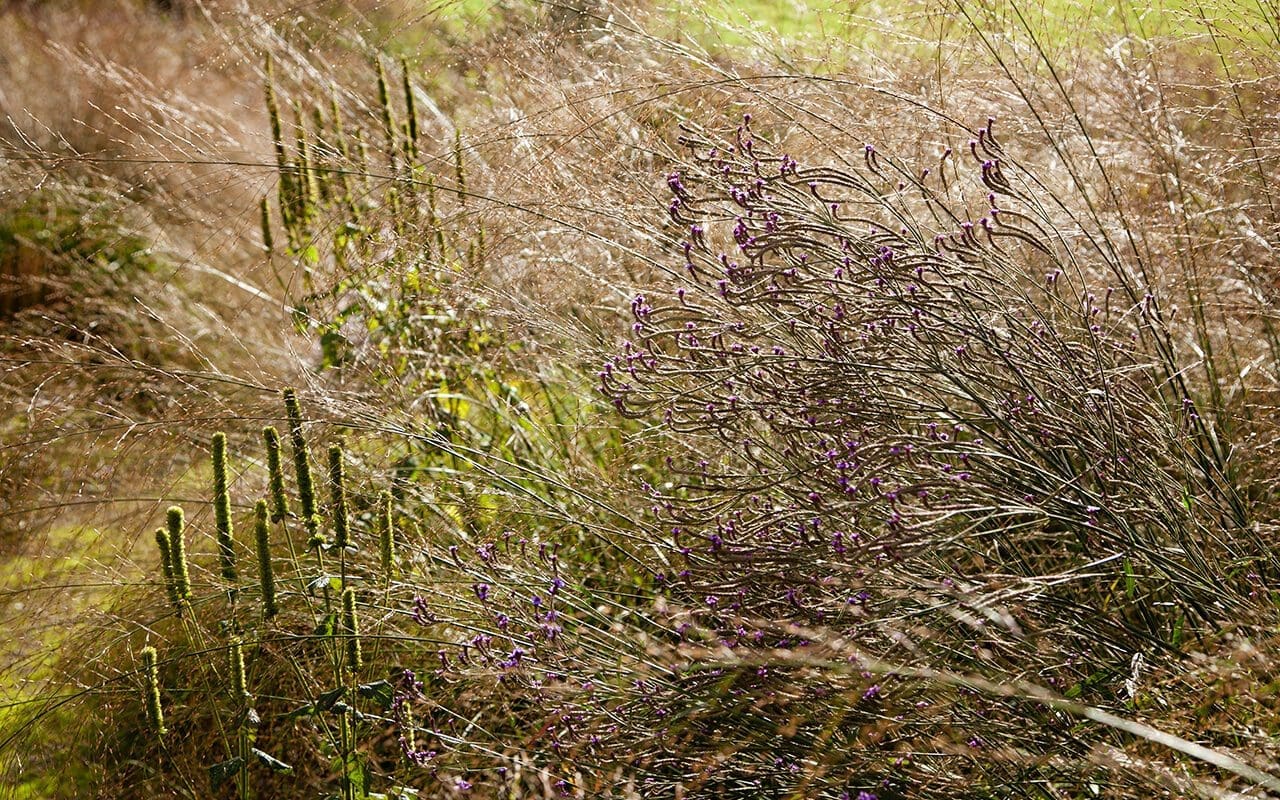
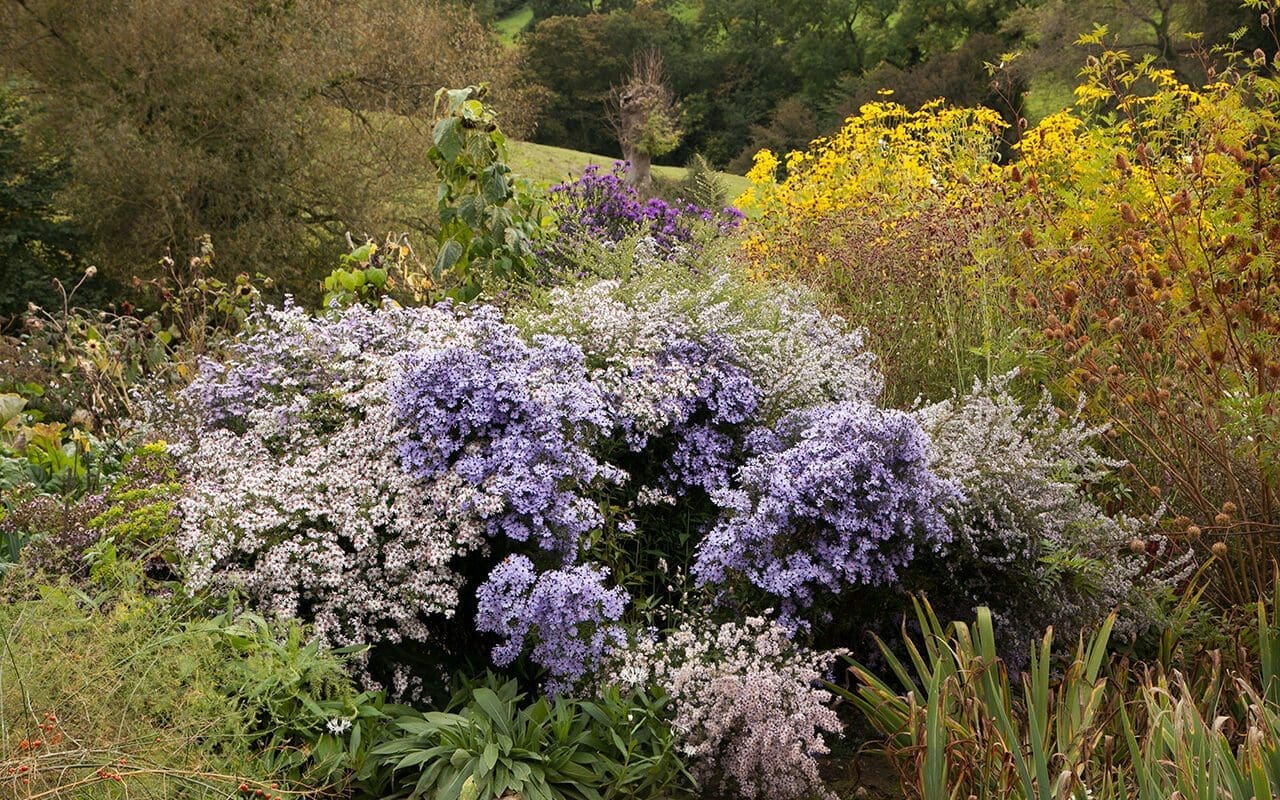
I made a trial of asters before making the garden here, testing a couple of dozen varieties to find the ones that felt ‘wild’ enough in the planting. I was looking for forms that were light on their feet, with air in the sprays and not too heavy with flower. It was also important that they were reliably clump-forming and without the tendency to run so prevalent in many, though I have been prepared to make the exception for Eurybia x herveyi ‘Twilight’. This is one of the earliest to flower here in late July and I always forget then the time I have to spend in March keeping them within bounds. I am probably going to move them to a corner where they can have a space amongst other plants that can deal with their wandering habits. Somewhere that feels akin to their home in Eastern North America, on the edge of woodland and reaching through grasses and scrub towards the light.
Symphyotrichum ‘Photograph’ was moved back into the garden last year from the stock beds, where I had kept the best of those from the original trial not used in the garden to further get to know them. A stock bed is a wonderful luxury. It is a practical place where one of each plant sits cheek by jowl with an unlikely neighbour and can be observed more closely than in the mind’s eye. It was this time last year when we felt we needed a lift amongst the Molinia ‘Transparent’ in the lower part of the garden. We picked a number of sprays from the stock plant and set them there to see how they felt. Then four canes were pushed into the beds with a label to remind me on the other side of winter what they were for. In March, after the garden was cleared, the original stock plant was split into four in text-book fashion with two forks placed back to back and levered apart to quarter the clump.
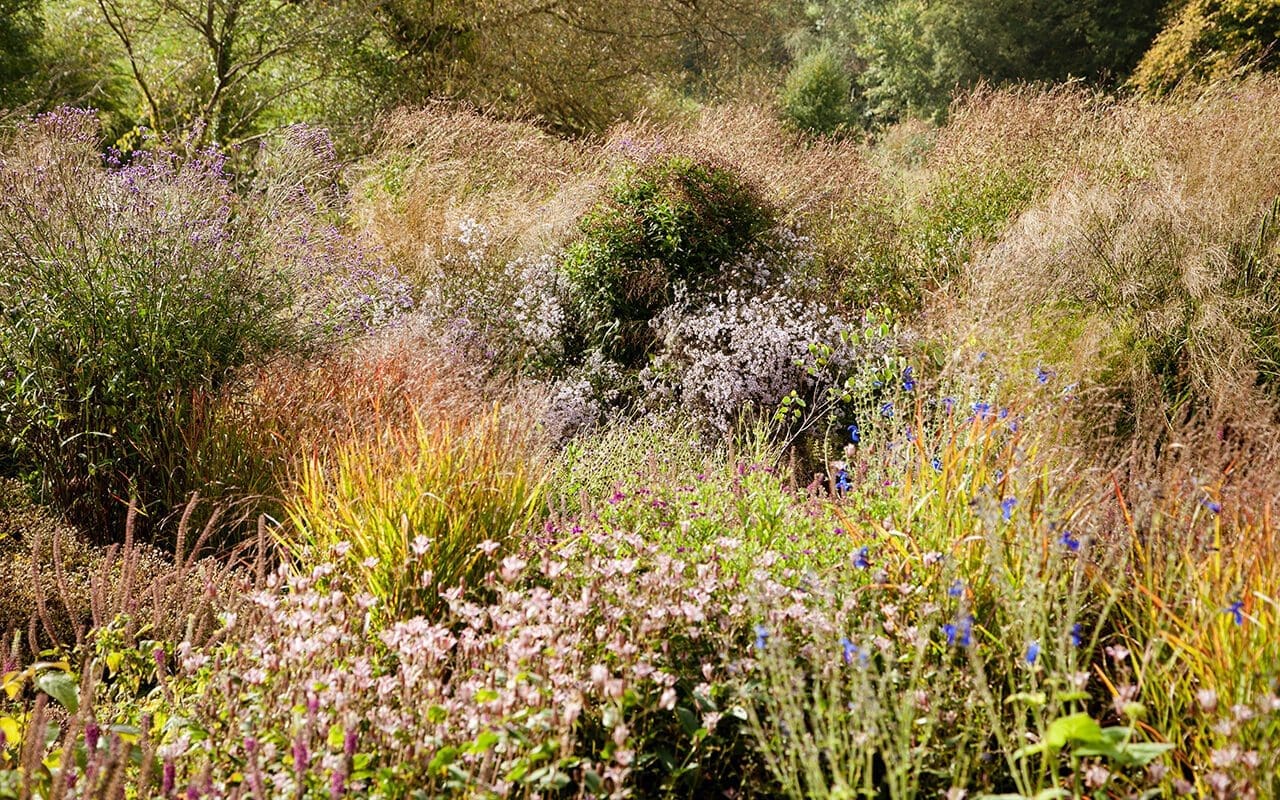
Symphyotrichum cordifolium, the Heartleaf Aster or Common Blue Wood Aster, is the parent of several good plants; ‘Chieftain’, ‘Little Carlow’ and ‘Primrose Path’ to name three in my original trial. The first two were rejected because they were too dense in flower and too showy. ‘Primrose Path’, which is lighter in feeling, made it briefly into the garden, until the fact that it was a seeder looked like it might become a problem.
‘Photograph’, a 1920’s S. cordifolium hybrid raised by Ernest Ballard, is tall at 1.2 m and needs a little staking if you do not have the room to let it sprawl. A Chelsea Chop in mid-May to reduce it to knee height encourages branching and curbs the tendency to lean. We have found it the room is has been waiting for, the benefit of patience and observation allowing it the opportunity to light up the molinia at this tail end of the season. Arching with the sweep of the grasses, the constellations of just-violet flower are alive with pollinators and capture the low October light to illuminate a garden that is on the wane. Falling away yes, but far from yet spent.
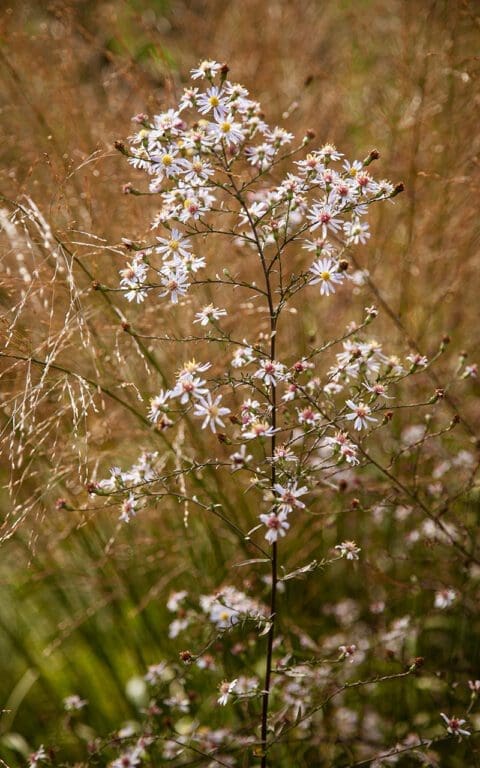
Post Script:
Asters, lamentably, have been reclassified and renamed in recent years. Retain the original name in your mind and forgive the awkwardness of the new names – Symphyotrichum, Eurybia, Doellingeria – which capture (to the non-botanist’s mind) nothing of the magic and rightness of Aster, which means ‘star’.
Words: Dan Pearson | Photographs: Huw Morgan
Published 23 October 2021
A chill wind is pushing the weather through the valley, tossing the garden and tearing the colour from the trees. This late autumn feeling is distinct for being burned clear into our memory of arriving here exactly eight years ago. We sat on the banks below the house wrapped in blankets on the same chairs that, just the day before, were out on the deck in Peckham, where we had willingly left a well-loved garden behind. The feeling of the new and the excitement of a prospect is still very clear to me and the anniversary has given us cause to ponder all that has happened since. The unloved land, grazed to the bone and up to the very foundations of the buildings, is now softened by growth. We look up the slopes into a little wood – our first planting project that winter, where an empty field gave way to a broken hedge – and down onto a new orchard where the trees are fruiting and casting their own proper shade. It is time marked very tangibly in growth.
Our thoughts that first weekend had not yet formed this place, but today it is better and more giving than I could ever have imagined. The reward comes from both the continuity and the luxury of being able to build something for yourself and be witness to its evolution. Every month we have been here has revealed something new, but the garden has amplified our connection with the land and the seasons. It is just a year since we completed the planting of the garden proper, but it is safe to say that every week has been provided for and, on this last full day of British summertime, the garden is still a place we can be where the season doesn’t quite have the upper hand.
This last push of flower before the frost takes hold is important, for soon all will be gone. Though I do not miss it then, for flower soon starts to feel out of place amongst the skeletons. Some of these late performers, the asters for instance, have been biding their time as they have built up their resources, and the place they have occupied until now is a necessary one that I have learned to see as a foundation for autumn rather than space wasted for earlier performers. The backdrop they provide in foliage to earlier-flowering perennials has offered stability and constancy. The filigree foliage of the October-blooming Aster turbinellus, for instance, is as delicate as netting and the flower equally beautiful and finely-rayed. Rising to almost a metre in height, but leaning as it comes to flower, it remains one of my favourites for its bright, clean colour and its thoroughly reliable, clump-forming habit.
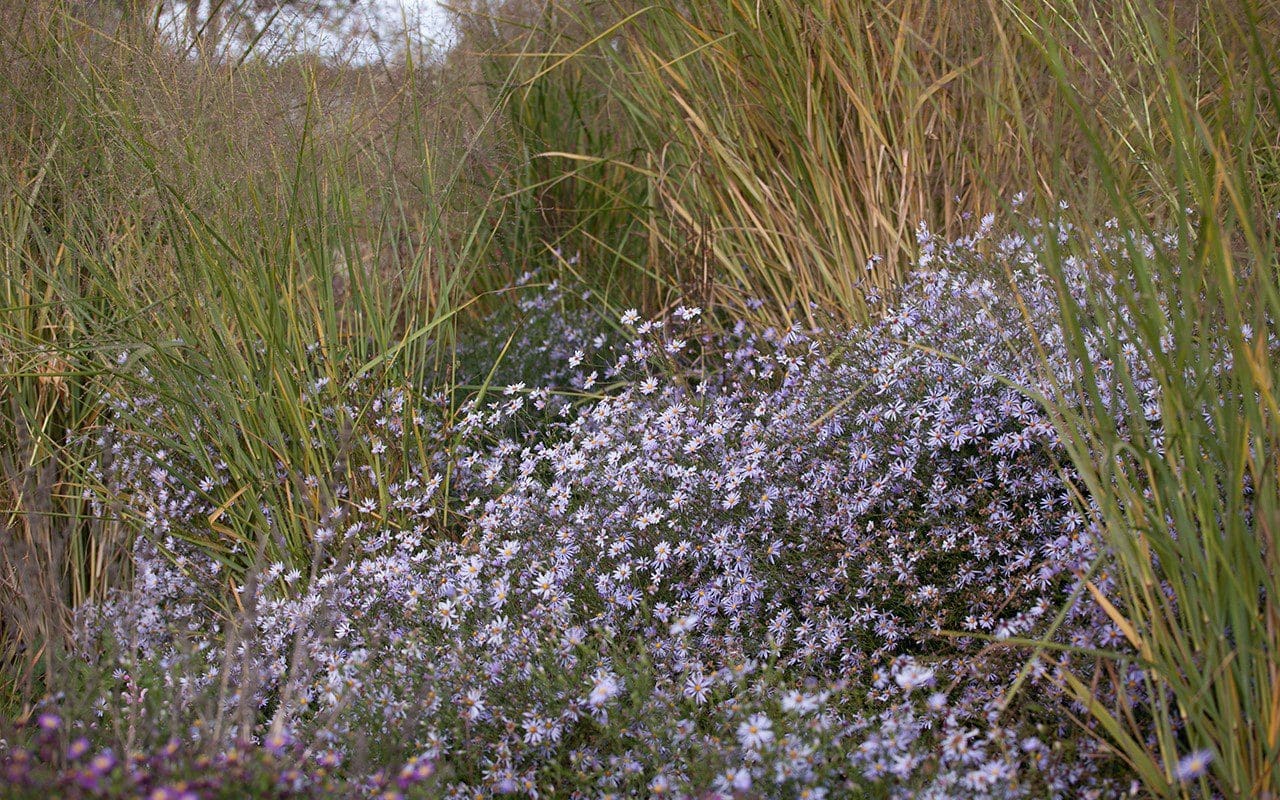 Aster turbinellus growing through Panicum virgatum ‘Cloud Nine’
Aster turbinellus growing through Panicum virgatum ‘Cloud Nine’
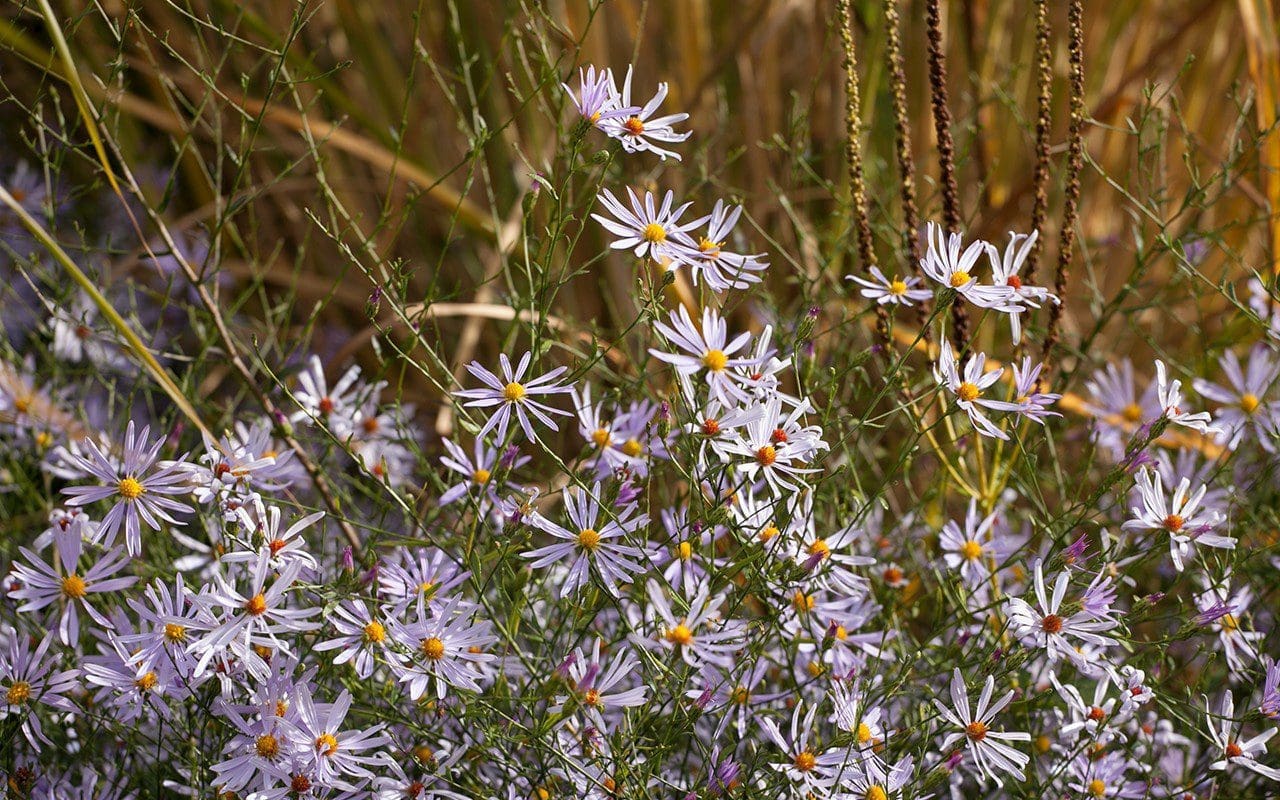 Aster turbinellus
Aster turbinellus
I am not sure yet whether I can say the same for Aster ‘Ezo Murasaki’, which is bulking up steadily. Asters that stay put in a planting are important, but so far I have forgiven this Japanese native its lust for life. It has licorice-dark stems and serrated foliage which you might at first think belonged to a chrysanthemum and that colours with red tints as the temperature falls. It comes into flower in late September at about 60cm, and is at its zenith now. The flowers are single, with bright, violet centres, darkening towards the tips and ageing to royal purple, giving the mass of flower a variance in depth. They also have a bright gold eye which prevents them from feeling sombre. I have them paired with the muted tones of Teucrium hircanicum ‘Paradise Delight’ in an undercurrent beneath Molinia caerulea ssp. arundinacea ‘Transparent’. We will see in time if they creep too readily. Three years of growing them has shown me that they need to be watched, but not worried over like some asters.
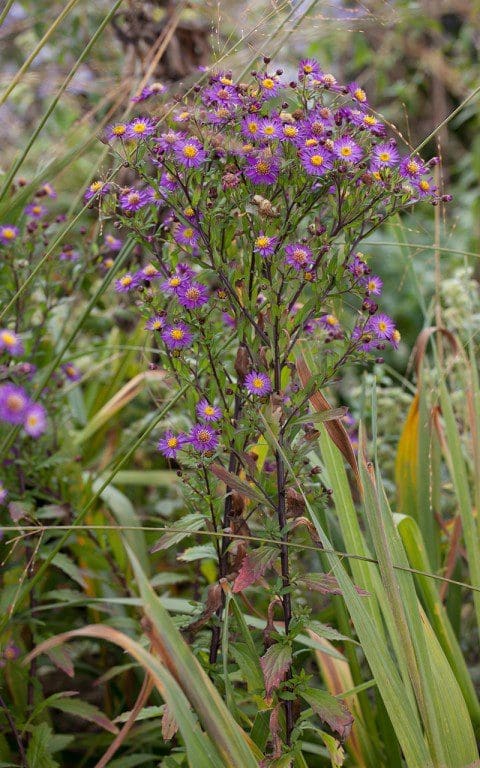
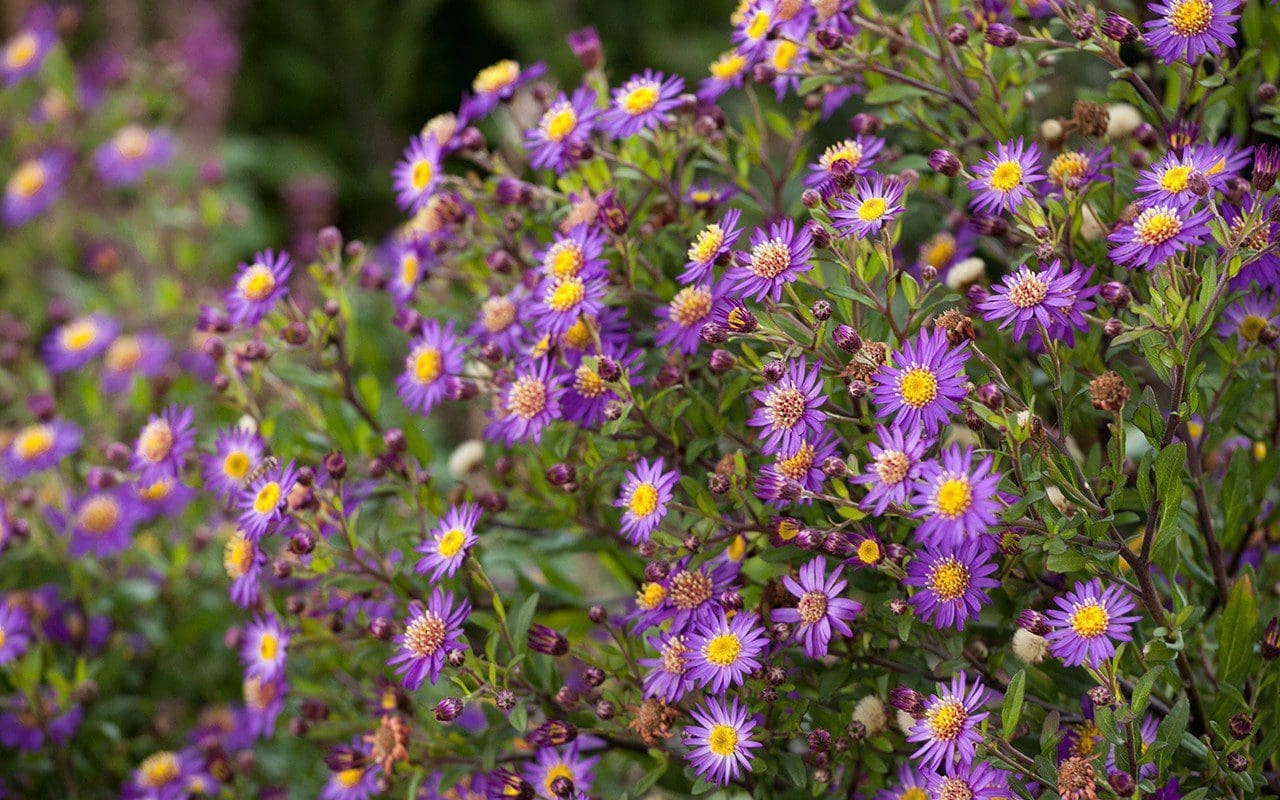 Aster trifoliatus subsp. ageratoides ‘Ezo Murasaki’
Aster trifoliatus subsp. ageratoides ‘Ezo Murasaki’
Close by, and doing better than I had imagined on our open slopes because our soil is retentive, is Tricyrtis formosana ‘Dark Beauty’. I have them grouped under a young crab apple, which will provide them the dappling they need and look better for in time. ‘Dark Beauty’ is a named form that retains the spotting that gives them their common name, the Toad Lily, and I prefer these to the plain selections without spots. However, it isn’t as dark as I had imagined and I’m on the look-out for a deeper-coloured selection having seen and remembered them from my time at The Edinburgh Botanic Garden. If they can be bettered, I will replace them. That said, for the past six weeks they have been a delight and will continue until they are felled by frost.
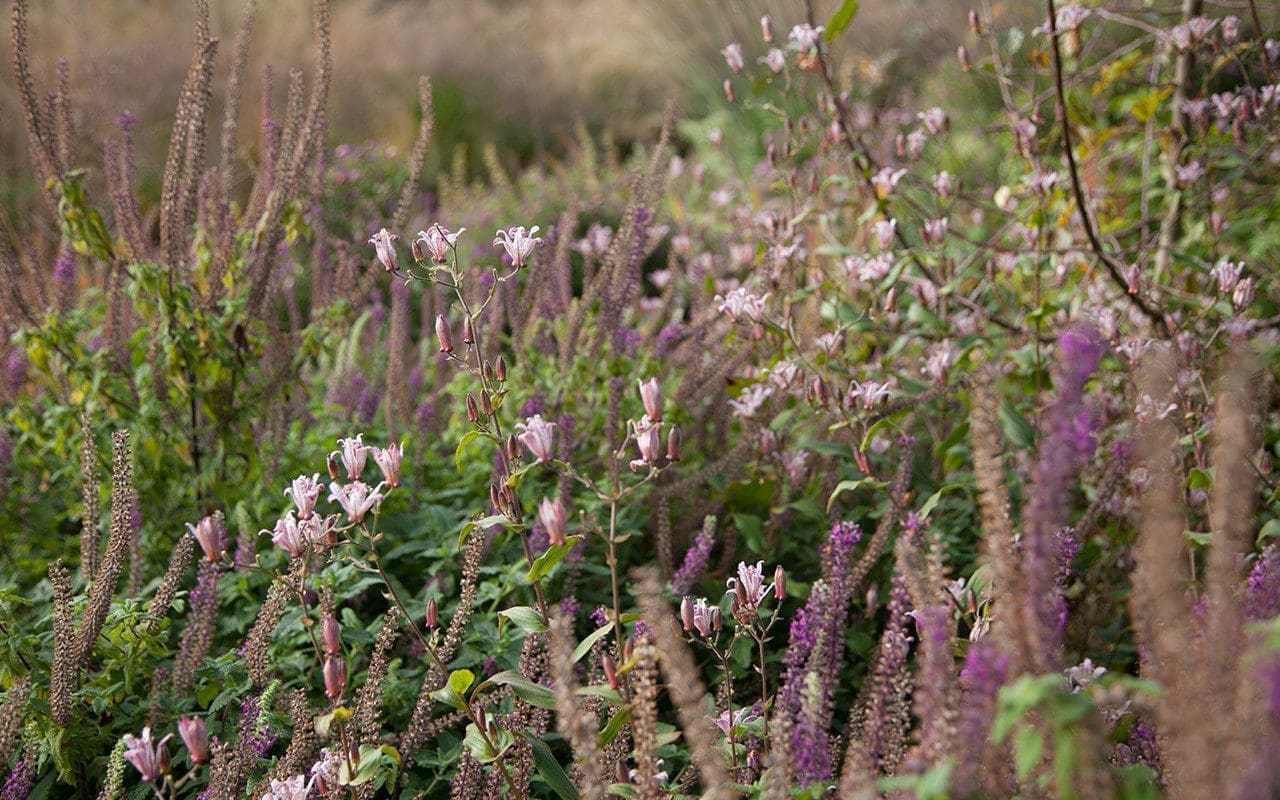 Tricyrtis formosana ‘Dark Beauty’ and Teucrium hircanicum ‘Paradise Delight’
Tricyrtis formosana ‘Dark Beauty’ and Teucrium hircanicum ‘Paradise Delight’
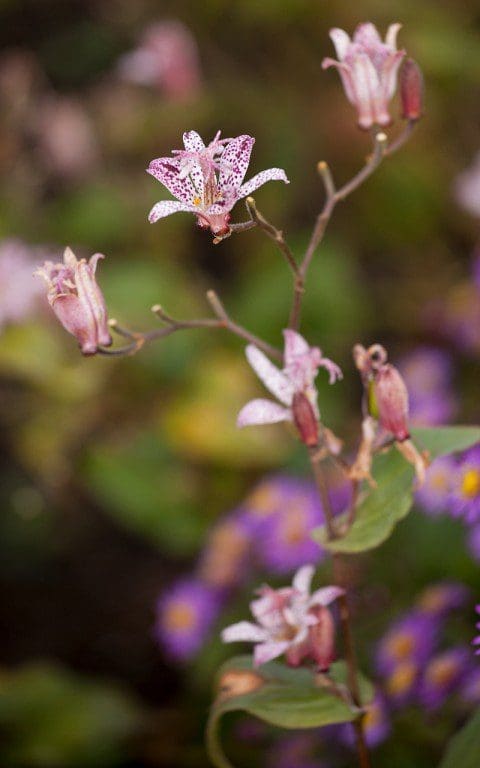 Tricyrtis formosana ‘Dark Beauty’
Tricyrtis formosana ‘Dark Beauty’
Also worth the wait if you can find it a place where the foliage doesn’t burn, are the actaea. A tribe of late-flowering perennials that occur both in Japan and North America, they prefer moisture or retentive soil and cool for their foliage. Where I have used them in the parterre at Lowther Castle, they thrive in the open with the wetter climate of Cumbria, whereas down here in the south, they prefer some shade. Although they are a long-standing favourite, they have often frustrated me in my own gardens over the years. They hated me in Peckham, where my ground was too dry and their leaves burned to a crisp. The dark, ferny foliage earlier in the season is half their appeal and in Actaea ‘Queen of Sheba’ (main image), the greater part of why they are worth the effort. If you can find them a place where they are happy, they never deviate from elegance, rising up tall and taking up no more space than they need in their ascent. ‘Queen of Sheba’ is distinct from the usual vertical line of most actaea, in that its flowers arc in beautifully drawn lines. Dark buds open from the bottom upward to form a wand of light-catching, highly-perfumed plumage that last until the dark nights are with us for sure and the flowers finally fade away.
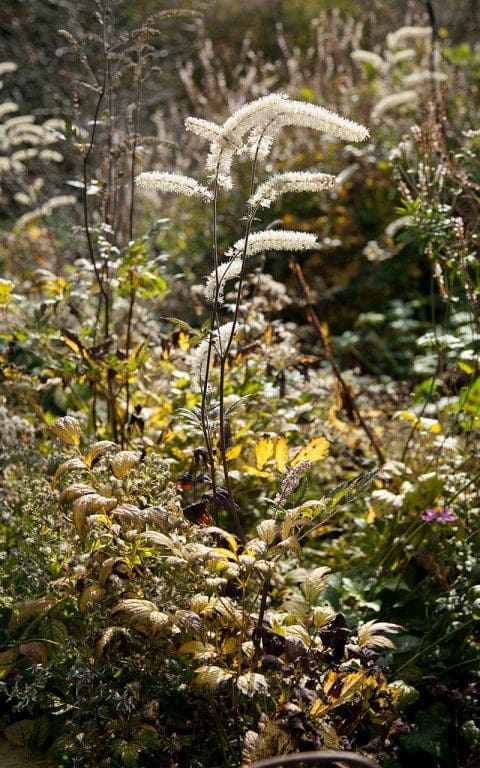 Actaea ‘Queen of Sheba’
Actaea ‘Queen of Sheba’
Words: Dan Pearson / Photographs: Huw Morgan
Published 27 October 2018
We are sorry but the page you are looking for does not exist. You could return to the homepage